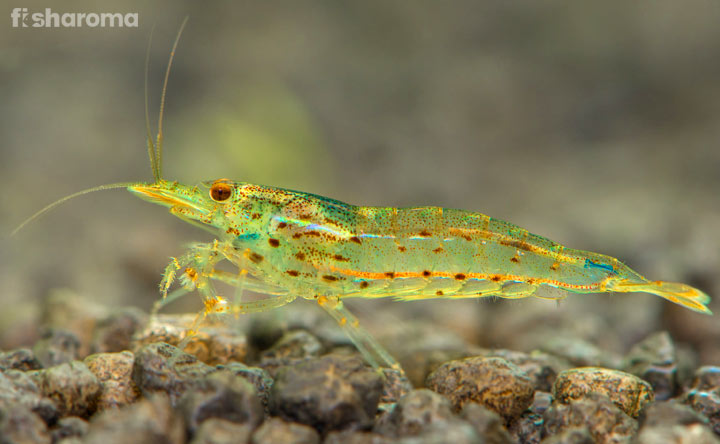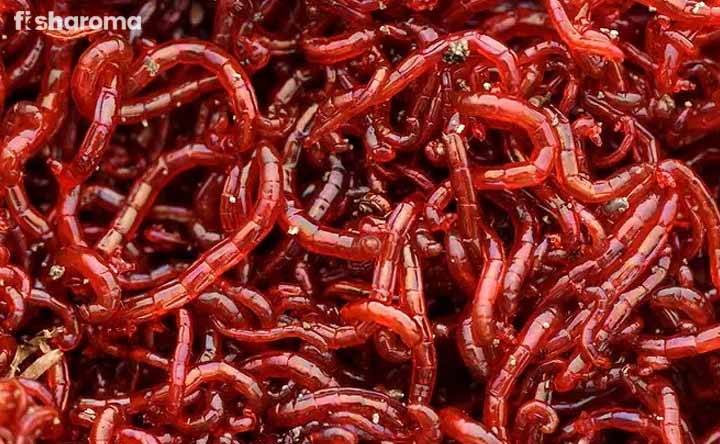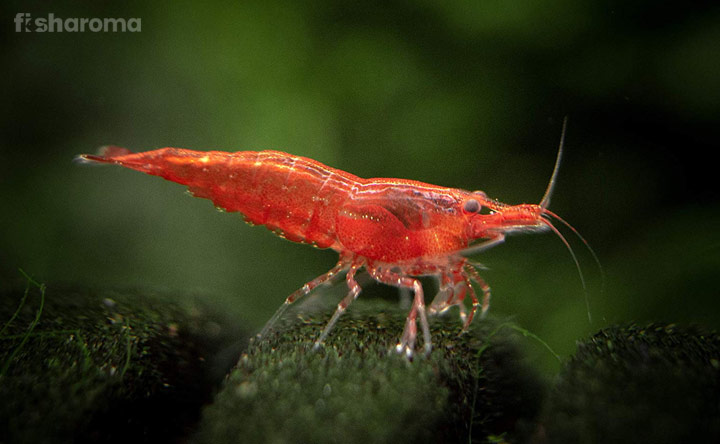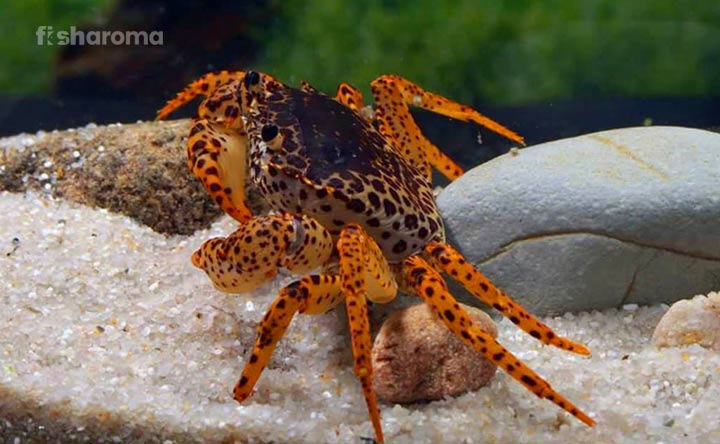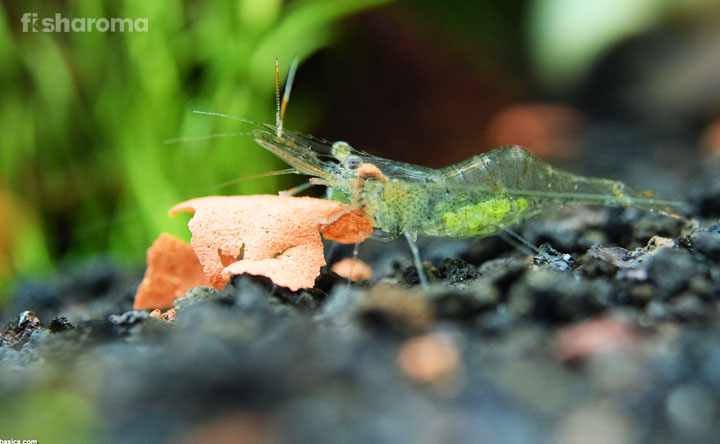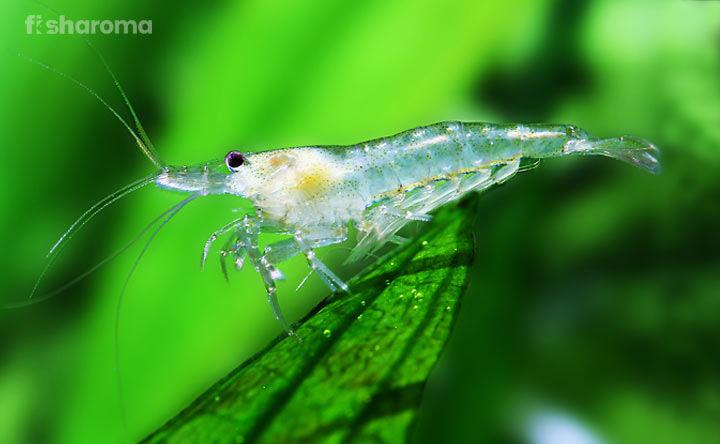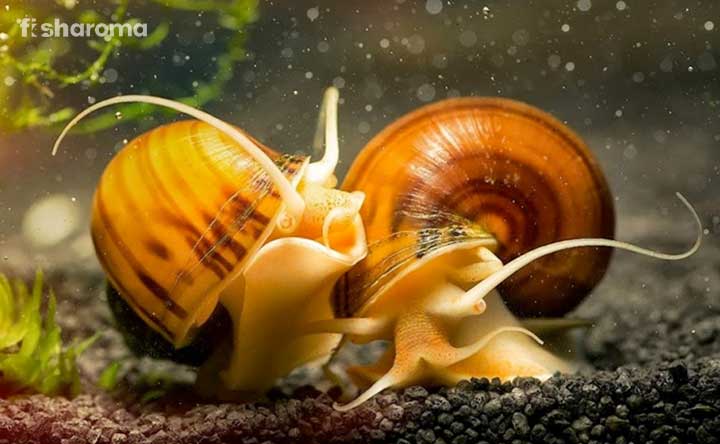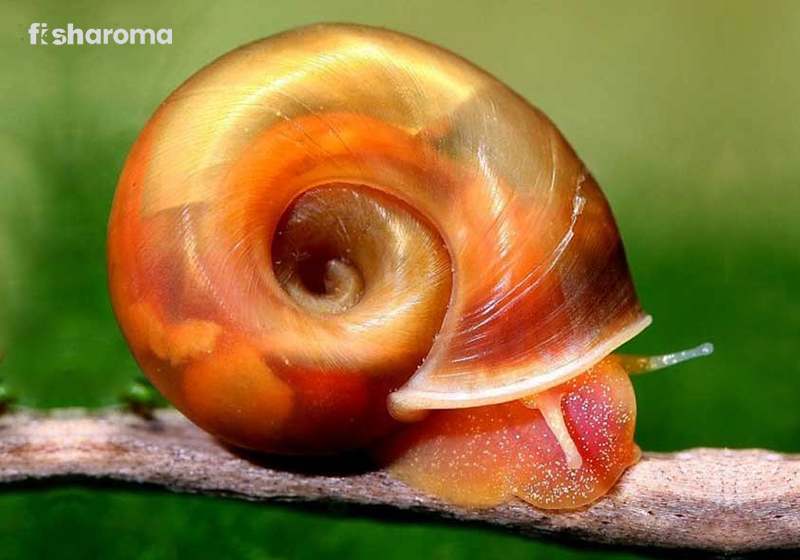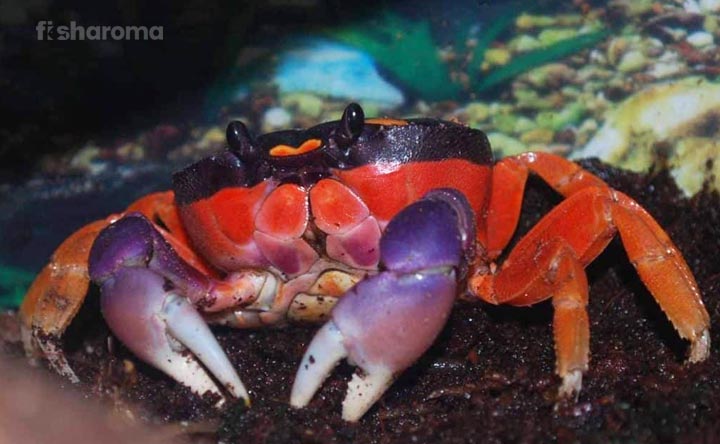What Do Crayfish Eat? Know the Best Diet for These Sporty Aquatic Species
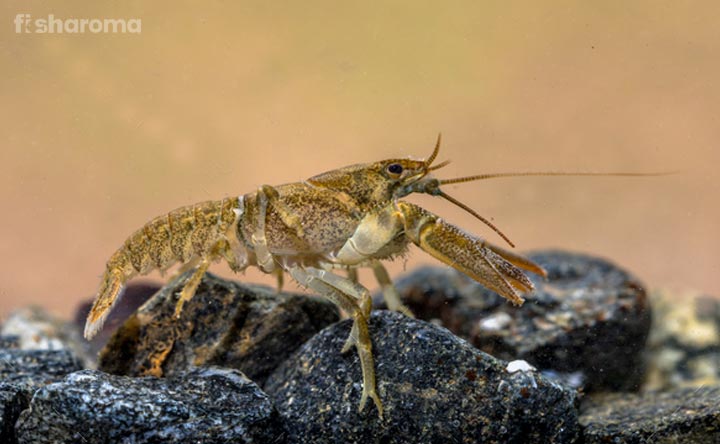
- An Overview of Crayfish
- What do Crayfish Eat? – A Closer Look
- 1. Blue Crayfish
- Available Food Options for Blue Crayfish
- 2. Dwarf Orange Crayfish
- Available Food Options for Dwarf Orange Crayfish
- 3. Dwarf Blue Crayfish
- Available Food Options for Dwarf Blue Crayfish
- 4. Red Swamp Crayfish
- Available Food Options for Red Swamp Crayfish
- 5. Australian Red Claw Crayfish
- Available Food Options for Australian Red Claw Crayfish
- 6. Self-Cloning Crayfish
- Available Food Options for Self-cloning Crayfish
- 7. Common Yabby
- Available Food Options for Common Yabby
- How Much and How Many Times to Feed a Crayfish?
Keeping a stunning red Crayfish or an electric blue one in a freshwater aquarium has always been a pleasure for the fish-keepers as it enhances the elegance of an ordinary aquarium. Fish-keepers are generally confused regarding the diet of Crayfish but it is not that difficult because their diet is pretty similar. You just need to choose the right food in the right quantity to pet a healthy Crayfish. We are here to assist you regarding what do Crayfish eat so that you can be a pro in Crayfish keeping.
An Overview of Crayfish
Crayfish are crustaceans that prefer freshwater to live in. Crayfish can survive in land too because of the gills that help them to breathe out. Their appearance makes them look like a lobster or shrimp. Available in large numbers in North America, Australia, New Zealand, Asia, and Europe, Crayfish are also known as Freshwater Lobsters, Mudbugs, Crawdads and Mountain Lobsters.
What do Crayfish Eat? – A Closer Look
There are different types of Crayfish for an aquarium and all of them have more or less similar food habits. All of them are omnivorous but you need to be specific at the time of feeding as small mistakes can make them cannibals. Take a look below for the detailed food habits of different Crayfish.
1. Blue Crayfish
Common Names: Electric Blue Crayfish
The hue of this Crayfish is the reason behind its attraction. They grow up to 10cm, so a 60cm or larger tanks will allow you to keep more than four Crayfish. As they are very aggressive in nature, a stronger filter is required in the tank. Plus, they can damage the decorations and live rocks you place in the aquarium. Most importantly, they will try to escape, so it will be better to cover the tank with a tight lid.
Food Habits of Blue Crayfish
Blue Crayfish can consume any type of fish foods containing insect or dead fish protein as well as the live plants of the aquarium. In terms of maintaining a Blue Crayfish, it is really very difficult as they seem stressed at the initial days due to a mismatched diet.
Also, they are very active in natural habitat and placing them in a tank will increase their level of stress. As a result of it, they may not eat for one or two days. To avoid this, you need to know the ideal foods for this Crayfish.
Available Food Options for Blue Crayfish
Being an omnivore, a Blue Crayfish will enjoy any Fish meal, Flakes, Granules, and Pellets. Blue Crayfish loves to hunt, which means that live foods will be a good option for them.
Among the flakes, Aqueon Shrimp Pellets Fish Food is the ideal one for Blue Crayfish. Besides that, Aquatic Foods Inc. Gourmet Blend with high-quality worm protein and algae nutrients can also be fed to them.
It is their most preferred activity to jump on their prey from the holes they dig in the substrate. So, you can give Live Brine Shrimp and Live Earthworms to Blue Crayfish. These foods supply an ample quantity of protein and fiber to the Crayfish.
Choose the foods that quickly go to the bottom of the aquarium as Blue Crayfish love digging a hole through the substrate of sand and hide in them.
2. Dwarf Orange Crayfish
Common names: CPO Crayfish, Mexican Dwarf Orange Crayfish, Orange CPO Crayfish
If you are a beginner Crayfish keeper, this will be a recommendation. It is slightly aggressive in temperament. These are only 5cm in length, so if you have a small tank of 40cm, it will not be an issue. Also, they can survive at room temperature, which will allow you to skip the heater. Unlike the blue one, it will not destroy your aquarium décor. The orange ones are a comparatively peaceful one, and they remain busy all day eating the leftover food in the aquarium.
Food Habits of Dwarf Orange Crayfish
A Crayfish irrespective of its temperament are omnivorous, but the Dwarf Orange Crayfish is different from others. These particular species often do not have any intention to harm the tank mates or live plants. Among all types of Crayfish, it is seen to have an appetite for plants and algae. Others just try to destroy the plants in the aquarium without eating them. You can feed other food items which are mentioned below.
Available Food Options for Dwarf Orange Crayfish
Algae Wafers are probably the most favorite food item for the Dwarf Orange Crayfish. Along with the leftover food particles, they eat the algae too. It will be better to include Spirulina in their daily diet. Aquatic Arts Sinking Pellets (.5 lb) Spirulina Food contains almost all the nutrients an Orange Dwarf Crayfish requires.
At the time of feeding, you must not forget that Dwarf Orange Crayfish is also an omnivore. So, try to feed high protein foods like Hikari Crab Cuisine Rapidly Sinking Sticks for Bottom Feeders & Crustaceans and Freeze-Dried Krills on the alternative days. It is also preferable if you give only fleshy items to this Crayfish as it scrapes and eats a lot of algae in a day.
It is important to supply sufficient calcium to a Crayfish so that their shell becomes unbreakable and Spirulina supplies this calcium to the Crayfish. The vegetarian meals make the Crayfish strong from inside, and the insect or worm protein makes the Crayfish active and sporty.
3. Dwarf Blue Crayfish
Common names: Least Crayfish, Blue Brazos Dwarf Crayfish
A smaller version to the Electric Blue Crayfish, these are the most peaceful and smallest (2.5cm max) Crayfish. Sufficient hiding place and properly cleaned aquarium are the first and foremost need of this species.
Food Habits of Dwarf Blue Crayfish
These particular species remain calm yet very active throughout the day. You will hardly see this Dwarf Blue Crayfish attacking other tank mates or destroying the live plants of your aquarium. This tiny Crayfish mainly depends on the food you supply from outside. It is also an omnivore yet it prefers fleshy things to green veggies.
Just like the Blue Crayfish, Dwarf Blue one too keeps crawling on the substrate of the aquarium. Therefore, you need to include the foods which can sink to the bottom of the aquarium faster in its daily diet.
Being the tiniest one, it is twice playful in comparison to others. Also, as it tries to consume animal protein more than veggies, it can have an obese problem. Well, it is applicable for its natural habitat but when it is in the aquarium, you can handle this in a better way.
Available Food Options for Dwarf Blue Crayfish
For the Dwarf Blue Crayfish, it is needed to make a diet where animal and plant nutrients are balanced. For example, a meal for Dwarf Blue Crayfish must contain dry algae and plants as well as frozen shrimps and worms. API Fish Food PELLETS is an example of this. This meal contains Seaweed, Shrimps, and vegetables. Along with that, Frozen Carrot Cube will also be a good choice for this Crayfish.
Vegetables are the source of vitamins in the Crayfish which later converts into energy and helps the tiny species to remain playful for the entire day. The compact meals help Crayfish to intake the essential nutrients which will help them to cope up with their stress.
4. Red Swamp Crayfish
Common names: Louisiana crawfish, Scarlet Red Crayfish, Neon Red Crayfish
These are known for their color among the fish-keepers, and these are the most expensive ones too. A matured Red Swamp Crayfish is 12cm in length, and a tank of 80Cm will work fine with these extremely aggressive species.
Food Habits of Red Swamp Crayfish
Like other Crayfish, Red Swamp Crayfish is also an omnivore, but sometimes it tends to be cannibalistic which indicates that they eat their own species. It is good to cut any meat from the diet of this particular Crayfish if you are keeping more than one in your tank because they will kill and eat the tankmates.
On the other hand, if you are keeping a single Crayfish setup, it will not be a good idea to cut out the flesh from their diet. There are certain rules which need to be followed strictly for this Crayfish.
Available Food Options for Red Swamp Crayfish
A Red Swamp Crayfish needs to have a mixture of plant nutrients and animal protein in their daily diet. Triton Aquatics Deep Dwellers NutriSpheres will be a good choice here. Along with this, Mosquito Larvae and Frozen Squid will be a good choice for them.
Mosquito Larvae and Frozen Squid will supply the essential calcium and iodine to the Red Swamp Crayfish, which will make the shells stronger and shinier. The flakes will give the energy and essential minerals and keep the Crayfish busy in different activities. As a result, the extra calories will be burnt.
Foods containing plant fertilizer needs to be skipped as fertilizers have much copper sulfate.
5. Australian Red Claw Crayfish
Common names: Red Claw Crayfish
A 100cm or larger tank will be alright for this one as it grows approximately 20cm. It is the most aggressive one in the Crayfish category, which can harm the plants and misplace the decors. Slightly warm temperature of the water and sufficient hiding places that can keep them busy will be alright to keep them.
Food Habits of Australian Red Claw Crayfish
This Crayfish also loves to hunt, and their favorite activity is to attack the prey from a hidden place. It has strong and sharp claws that help them to kill their prey. Keeping anything along with this one will be dangerous because it is always hungry.
For the diet of this extremely aggressive Crayfish, variety is necessary. A combination of fry and frozen foods will serve its purpose of supplying the nutrients. Besides that, add live foods too to maintain its aggressiveness. Frozen vegetables are also an essential requirement for Red Claw Crayfish which means that you need to be very particular about its diet.
Available Food Options for Australian Red Claw Crayfish
The vegetables like Zucchini and Pea are mandatory in the diet of Australian Red Claw Crayfish. Like the other Crayfish, the Australian Red Claw Crayfish also prefer the live foods, flesh or insects. As a result, they often have a lack of vitamins that can be supplied by fruits and vegetables. Frozen Pea and Zucchini will fill this gap. Java Moss will also be a good choice for this Crayfish. That’s about the veggies; now let’s move on to flesh.
You can feed Brine Shrimp and extremely Small Cube of Meat on an alternative day to this Crayfish. Keep it in mind that animal meat contains excessive protein, and consuming that daily will result in obesity. Dead Fish will also be a good choice for this particular Crayfish but on alternate days.
Vitamin B and C will be supplied from animal meat and shrimp. Essential fibers will be received from frozen foods which will speed up their growth. You will be able to see the glow of their shells after feeding them vegetables.
6. Self-Cloning Crayfish
Common names: Marmorkrebs, Marbe Self-Cloning Crayfish, Marbled Crayfish
It is a small-sized (10cm) Crayfish that does not need a mate to reproduce, so you can start with only one of this type in a 60cm tank. Slightly aggressive, they need the least adjustment in tank water temperature, but they are very much active, so a tight lid is necessary.
Food Habits of Self-cloning Crayfish
As this Crayfish goes through a self-reproduce system, you need to be extra careful about their diet. The diet of this fish needs to be extremely healthy. Plus, you need to make sure that all the nutrients of the foods are contributing to its overall growth. Self-cloning Crayfish loves to chew the food. Therefore, the inclusion of harder food materials in their diet will be a good choice.
Available Food Options for Self-cloning Crayfish
Frozen Krill must be in their daily diet. Along with that, Lettuce Leaves and Spinach Leaves will supply the plant nutrients to Self-cloning Crayfish. 6 Marimo Moss Ball Variety Pack is a must-have in the diet of this Crayfish. SunGrow Shirakura Shrimp Food, Aquatic Arts 1 Self-Cloning Marmorkreb Crayfish and Triton Aquatics Deep Dwellers NutriSpheres will also be good to feed twice a week to see visible growth. Fresh live foods, like Small Fish, Bloodworm, Earthworm are also required but not on a daily basis.
Live fish cannot be fed to the Self-cloning Crayfish daily as it will slow the reproduction process. Also, a lack of veggies will make them lethargic. You can feed Algae Wafers or Spirulina flakes for 3-4 days a week, and in the rest of the days, you can feed them live foods. Whatever food you are choosing, make sure that it sinks quickly to the bottom.
Self-cloning Crayfish often go through fast ageing, but live foods will reduce this tendency. Also, this species is found much stressed in comparison to others. Green veggies like lettuce and spinach will keep them cool and less stressed. Dead fish contain protein that keeps the Crayfish active.
7. Common Yabby
Common names: Freshwater Yabby
These brown species are commonly found in the freshwater aquarium and are considered as the destructors because of their aggressiveness. They simply intake whatever they come across (be it fish or décor), and that’s why single-Crayfish setup works well for them.
Food Habits of Common Yabby
Common Yabby eats a lot and eats everything. Unlike some Crayfish, Common Yabby has an appetite for algae, krill, worms, and everything else. Common Yabby is simply not selective in terms of their diet. It can chew and destroy the plants and digest them as well. Also, remember that Common Yabby is unlike other Crayfish and they love to stay in the middle of your aquarium. So, you don’t need to select the quick sinking foods.
Available Food Options for Common Yabby
You can add a variety of food to the diet of Common Yabbies ranging from Algae Wafers to Dry Seaweeds, from frozen food to live foods, from fresh vegetables to Freezed dried meals. Common Yabby will consume everything.
Aquarium Plants, Snails, Daphnia, and Shrimp Meals are common in their diet. These are the high energetic Crayfish, and they stay busy in making their way in the substrate. Aquatic Arts Spirulina Flake, API Fish Food PELLET, Brine shrimp meal, and Aquatic Arts Algae Wafers appear to be good choices for the Common Yabby. Along with that, you can feed them Mosquito Larvae too.
All essential nutrients like carbs and protein received from the live foods, and vitamin A, B, and K are supplied by fresh vegetables. Minerals, protein, and fibers are present at a high rate in squid and shrimp which make the Common Yabbies active.
How Much and How Many Times to Feed a Crayfish?
When the Crayfish is adult, you don’t need to feed more than a 0.75inch pallet, and that too on alternate days. For the young Crayfish, you need to feed the same quantity every day. The time of feeding has to be the same. In case you see them not eating, you need to try other foods.
You can use a pair of non-sharp tongs to feed your Crayfish. To feed a fry, you can break a flake into a tiny size or you can feed crushed shrimp or shrimp powder. It takes 15 days to grow larvae from the hatched fries.
Summary
Don’t you think that it is just a misconception that feeding a Crayfish requires excessive effort? Well, it is. You just need to follow the specific aforementioned guidelines for the Crayfish you are keeping, maintain the tank and its food quantity. These are all you need to know to handle your sporty aquarium buddy.
Interesting Facts about Crayfish’s Diet
- Crayfish are more active at night, so take out the leftover foods in the morning.
- If you skip feeding they can become cannibals.
- Larvae often fail to find foods which can cause to their death.
Know More about Fishkeeping
Go through the guidelines and be a pro in fishkeeping!
- What to Feed Your Fish: Based on the diet of your aquarium fish select the best foods and promote their healthy growth.
- Best Algae Eaters for Your Aquarium: Know the best algae eaters and make your aquarium a safe place for your fish.
- Easy Guide to Aquarium Cleaning: Know the DIY steps to clean your aquarium so that your fish can have healthy growth.

